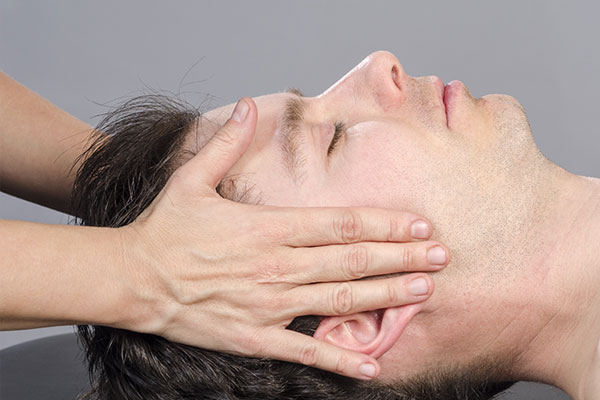
What is TMJ?
Calling your mom, devouring your dinner, and yawning when you’re tired. Standard activities in our every day lives, but have you ever given thought to how they work? These actions are only possible with your temporomandibular joints or TMJ - handy little hinges that connect your jaw to your skull and allow movement.
Occasionally arthritis, whiplash, genetics and other causes can lead to dysfunction, making even basic facial tasks challenging and painful.
TMJ symptoms can include:
- Swelling
- Headaches
- Tinnitus (ear-ringing)
- Clicking or ‘popping’ noises when you open your mouth widely
- Inability to open or close the mouth smoothly.
Doesn’t sound like a whole lot of fun! So what happens when you run into TMJ trouble? Before resigning yourself to a life of soft foods and discomfort, consider booking an assessment with a Lifemark physiotherapist.

Here are three ways TMJ issues can be effectively treated:
1. Posture correction. Did your mom ever tell you to sit up straight and stop slouching? Sure, we grumbled at this advice, but she’s right - poor posture can have an adverse effect on health and can even affect your jaw. When your cervical alignment is off, (often from slouching with shoulders forward and chest back), the alignment of your jaw can follow suit and cause unwanted TMJ issues, not to mention neck and shoulder pain. Physiotherapists work with clients to improve positioning (sitting at work, in the car etc.), to minimize discomfort, re-align the spine, and reduce TMJ dysfunction symptoms.
2. When you’re anxious, do you bite your nails, grind your teeth, or clench your jaw? Many people do without even realising it. Unfortunately, these stress-induced habits can lead to TMJ issues down the road. A massage from a physiotherapist or massage therapist can help relax and lengthen muscles, reducing tension in the jaw area. And who doesn’t enjoy a massage?
3. Rehab! Many injuries rehab with exercise. But you can’t exactly ride a stationary bike, do squats, or lift weights to aid recovery from TMJ dysfunction. However, there are exercises that can stretch and strengthen your jaw muscles. This might include opening and closing your mouth with resistance, moving the jaw in various directions, chin tucks, and more. Your physiotherapist will work with you to create a program specific to your condition to help mobilize your jaw and work towards increasing your range of motion.
To find a location near you, read therapist profiles, or book an assessment with one of our experienced healthcare providers, please visit www.lifemark.ca/locations
